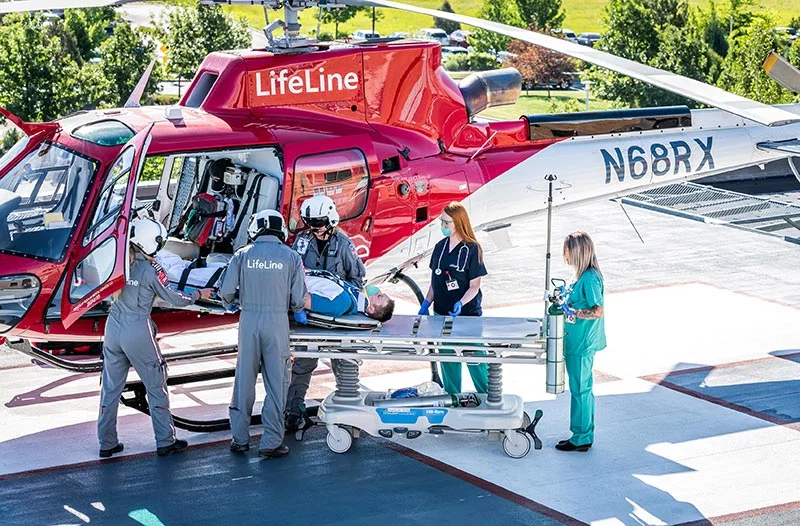
Ah, summertime, the season of long days, warm weather, plenty of sunshine and lots of time outdoors. Who can resist a hike in the mountains, a long bike ride, a dip in the pool or a barbecue with friends and family?
For Dr. Robert Lam, who specializes in emergency medicine, summer looks a little different from inside the UCHealth Memorial Hospital Central ER.
Summer activities are not without their perils, said Lam, who is also an assistant professor of emergency medicine at the University of Colorado School of Medicine en el Campus Médico de Anschutz.
That’s why he and others call it the “summer trauma season.”
“Summer is a fantastic time, and we live in an amazing state, and it’s great to get out there,” he said.
But all of those adventures can lead to accidents.
To help you stay healthy and happy, Lam offers summer safety tips and this advice: “A little bit of prevention and knowledge goes a long way toward avoiding seeing us in the emergency department.”
Summer is the busiest season for UCHealth’s ERs. Winter certainly has its share of hazards – snowy roads, slick sidewalks and cold temperatures. But in summer, residents and tourists alike love to be outdoors and take in all that Colorado has to offer.
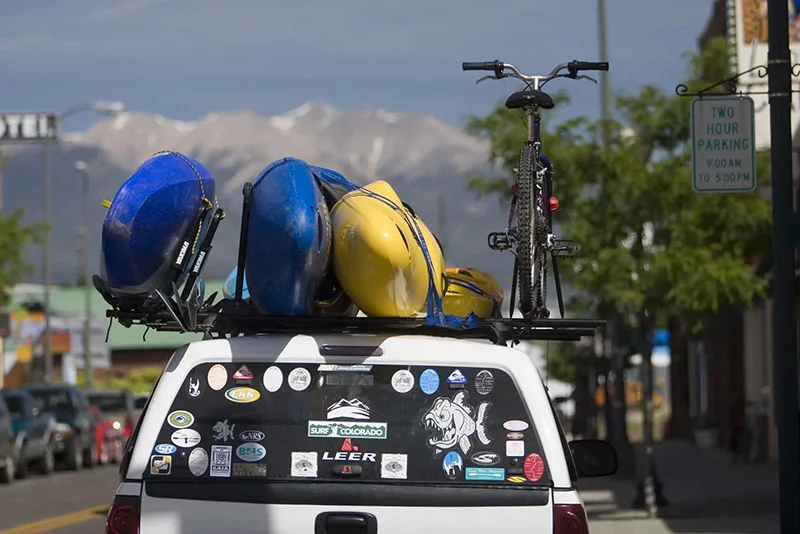
When to seek medical help
- Severe pain that won’t go away
- Heavy bleeding you can’t stop
- Trouble breathing or chest discomfort
- Head injury with confusion, dizziness, or loss of consciousness
- Broken bones or major swelling
- Numbness or weakness
- Injuries from a crash on a motorized vehicle, fall, or other serious accident
When in doubt, don’t wait. It’s better to get checked and be safe.
Source: Dr. Robert Lam, emergency medicine specialist at UCHealth Memorial Hospital Central
Summer trauma season results from a combination of factors, said Lori Morgan, trauma outreach and injury prevention specialist at Memorial Hospital Central. The weather is typically pleasant, and people are more active. School is out for most kids. The days are longer, increasing the amount of time people spend outdoors. And Colorado is a big draw for visitors, many of whom come from lower elevations, may be unfamiliar with Colorado weather, roads, trails and can suffer from altitude sickness.
As the only Level One trauma center in southern Colorado, Memorial sees patients from all over the southern part of the state, as well as from New Mexico, Texas and Oklahoma. The most common type of summer trauma? That would be falls, Morgan said.
But summer doesn’t have to be scary or dangerous. Some planning, foresight and attention can keep your summer plans on track.
Three things to remember before venturing out on summer adventures
Morgan suggests keeping these three things top of mind:
- Have the appropriate safety equipment for your activity and know how to use it correctly. This includes things like helmets, life jackets, seatbelts, clothing, footwear and more.
- Know and follow applicable laws. This includes following speed limits, wearing seat belts, wearing helmets and not using your cell phone or other mobile devices while you are driving. “The laws are made to protect us, and over the decades, we have seen lives saved and injuries reduced due to following the law,” she said.
- Have a plan and share that plan with friends or family. This could sound like “I am hiking at X location today. I plan to go X miles and be back by X time.” If you don’t show up at the appropriate time or need assistance, your loved one will know where you are, when you were expected, the gear you likely carried, and more details to provide aid, if needed.
Summer safety tips you can use to prevent injuries
Here are some of the activities that lead to the greatest number of accidents.
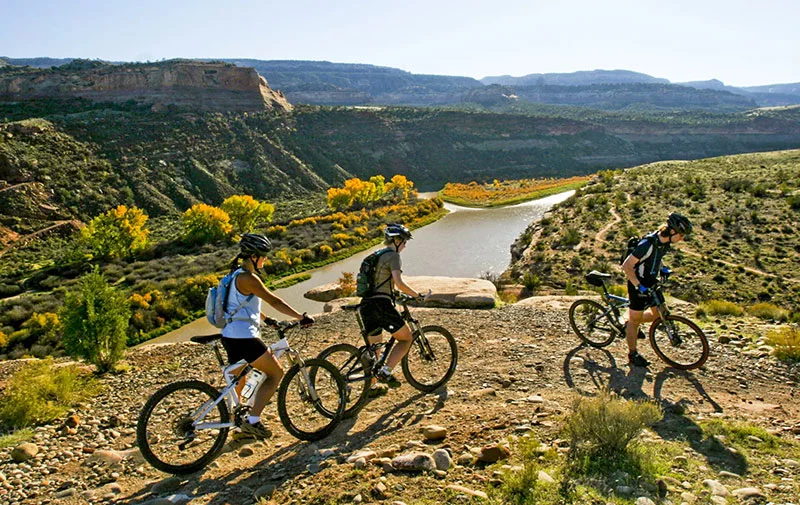
Enjoy Colorado on two wheels, whether by pedal or e-bike
Colorado offers wonderful options for biking, including bike paths, paved and gravel roads, and miles and miles of mountain bike trails, including those carved into ski area runs. Cycling is a great, healthy sport, but bike accidents are common. More than 130,000 bicyclists are injured in crashes each year, according to the U.S. Centers for Disease Control and Prevention (CDC).
The growing popularity of electric bikes is a new concern for Lam. He calls it the “electrification” of biking. As a cyclist himself, Lam estimates half of the bikes on the trails with him now are e-bikes. And while they provide a way for people of a variety of fitness levels to get outside and enjoy a bike ride, e-bikes should be treated as the motorized vehicle that they are, Lam said.
That means knowing you could be more seriously injured in a crash or an accident. A study in the journal Injury Prevention concluded that injuries from e-bikes and powered scooters differ from more traditional bikes (powered by pedals). And while rates of pedal bicycle injuries have been declining, particularly among children, e-bike injuries have been increasing dramatically, especially among older adults.
Emergency medicine doctors now keep an eye out for much more serious injuries when patients come in after e-bike accidents and ask if they’ve been thrown from the bike. That can put them at higher risk for severe trauma like head, abdominal and orthopedic injuries.

Lam recommends the following methods for staying safe while cycling:
- Always wear a helmet.
- Dress in reflective gear.
- Follow traffic rules.
- When possible, ride in a bike lane.
- On e-bikes, drive responsibly and cautiously. Ride like you’re driving a car since you’re on a motorized vehicle.
Learn how to choose a bike and the necessary cycling gear.
Electric scooters are increasingly popular, but know how to ride them safely
Lam said he’s seen an uptick in electric scooter-related injuries, particularly since e-scooter rentals have become common in city centers. A combination of factors makes e-scooter users prone to injuries. Scooters are relatively easy to use, and rental scooters don’t typically come with a helmet. Also, e-scooters can be especially appealing in the summer, and to someone who may be intoxicated and doesn’t want to drive a vehicle. But don’t be fooled. E-scooter accidents can cause broken bones, head trauma and facial injuries.
Lam says you can stay safe on a scooter by following these recommendations:
- Wear a helmet and protective clothing.
- Don’t use a scooter while under the influence of drugs or alcohol.
- Follow applicable laws and safety guidance.
Take precautions to avoid accidents on all-terrain and off-road vehicles
The growing popularity of all-terrain vehicles (ATVs) and off-highway vehicles (OHVs) is causing a corresponding increase in visits to emergency departments.
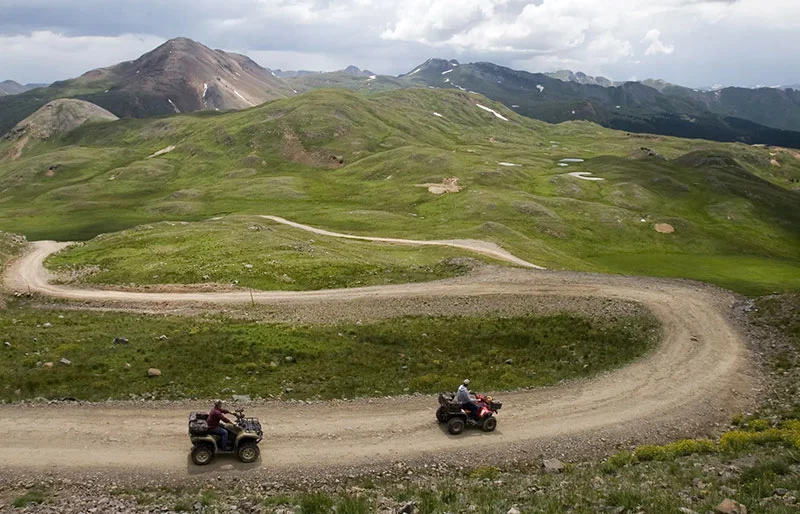
Nationwide, emergency departments treat an average of 100,000 ATV and OHV injuries per year, according to the U.S. Consumer Product Safety Commission. Common injuries include fractures, head injuries, abrasions and contusions, and internal organ injuries caused by overturned vehicles, collisions and occupants being ejected from the vehicle.
Of particular concern is the number of children riding in and driving an ATV, Lam said. The American Academy of Pediatrics says ATVs “represent a serious and ongoing public health and safety concern for children and adolescents.”
Lam and other experts recommend the following methods for staying safe while on an ATV and OHV:
- Wear a helmet, goggles and appropriate protective gear.
- Ride and drive defensively.
- Avoid riding in inclement weather.
- Children should not drive an ATV, and don’t place children in anything other than a designated seat – no lap rides.
- Wear seat belts if the vehicle has them.
- Take an ATV safety course.
Enjoy your time in the Colorado mountains, but be aware of the hazards that can cause injuries
Colorado’s high country offers expansive beauty and opportunities for summer fun. It also can trip up – literally – even the most experienced Coloradans. Summer outdoor trauma can stem from weather, altitude, falls, exhaustion, dehydration, altitude sickness and more.
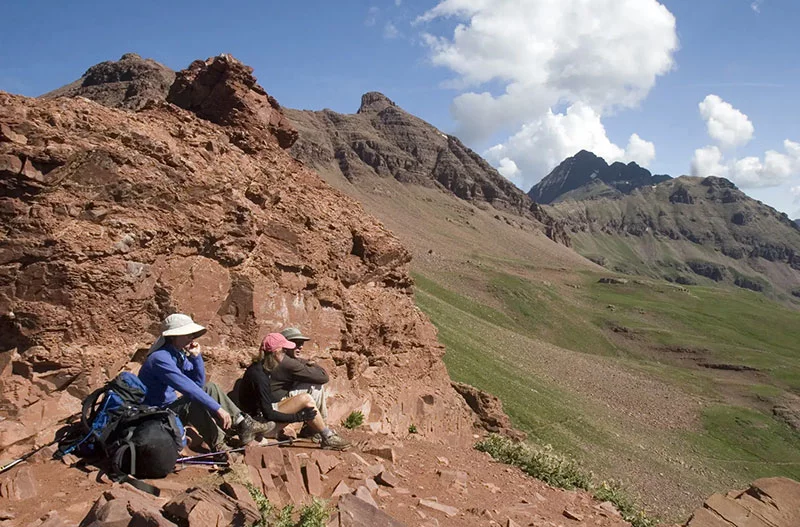
To avoid injuries in Colorado’s mountains during the summer, Lam and other experts have the following recommendations:
- Be weather-aware in Colorado. The weather can change quickly.
- Bring plenty of rain gear and warm clothes. Dress in layers.
- Bring a first aid kit, hiking poles and a map or mapping app.
- Bring plenty of food and water.
- Colorado thunderstorms can be very dangerous. Watch for lightning and stay off high peaks during storms. Learn how to stay safe from lightning.
Afternoon and evening thunderstorms are common in summer, and that means a heightened risk of lightning. Lam advises anyone who is spending time outdoors — including golfers — to follow this adage: “When thunder roars, go indoors.”
He recommends downloading a weather app and paying particular attention to where lightning strikes are happening and nearby options for getting inside.
Doctors give the following advice for staying safe from lightning and avoiding altitude sickness:
- Drink plenty of water and be alert to symptoms of altitude sickness like headaches, nausea and dehydration.
- Colorado’s elevation — 5,000 or so feet above sea level on the Front Range and Western Slope and up to 14,000+ feet plus on Colorado “14-er” peaks — is no joke. Altitude sickness can feel like you caught a bug, or worse, cause cerebral edema (HACE) or pulmonary edema (HAPE), both of which are life-threatening. How to know if you have altitude sickness.
- If you plan to hike a 14-er, this guide can help.
- Be aware that summer is peak time for rattlesnakes. How to avoid them, and what to do if you are bitten.
How to stay safe when you’re swimming and enjoying water sports in Colorado
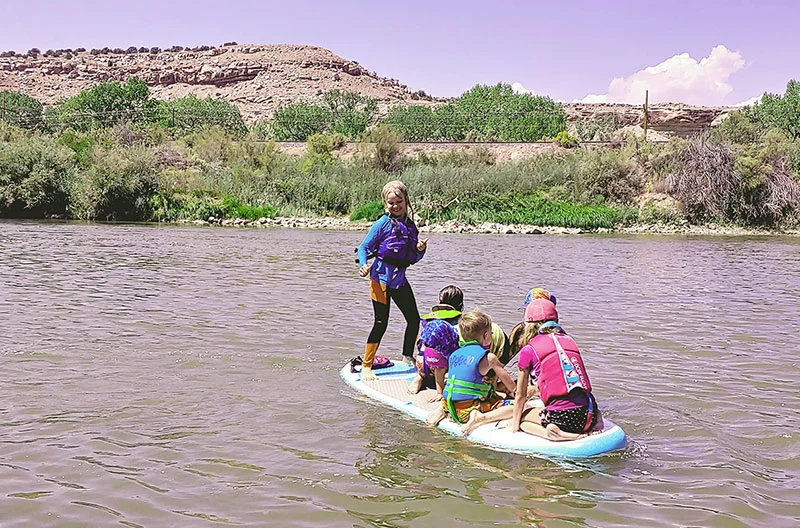
Whether you’re enjoying an outdoor pool, backyard kiddie pool, swimming hole or lake, a dip in the water makes for a perfect summer treat. But from a trauma perspective, water can be a deadly risk. Drowning is the leading cause of death for children, according to the CDC. Every year in the United States, there are an average of 11 drowning deaths per day, and another 22 nonfatal drownings. A drowning incident can happen quickly, and the water doesn’t have to be deep, Lam said. Children don’t necessarily know to stand up when they are in even a couple of inches of water. “Any time you have a child around water, they must be supervised,” he said.
Lam and other experts say these tips can keep everyone, especially children, safe in the water:
- Never leave children unattended near water. And never assume that water wings or other flotation devices will keep a non-swimmer safe.
- In pools, lakes, reservoirs and other bodies of water, always wear life vests when boating or paddleboarding.
- Know the water depth before diving.
- Learn CPR so you can render aid if needed. Participating in formal swimming classes can reduce the risk of drowning among children and young adults.
- Have proper safety fencing and pool covers to help prevent children from gaining access to a pool.
Stay safe from summer heat: How to avoid heat stroke and heat exhaustion
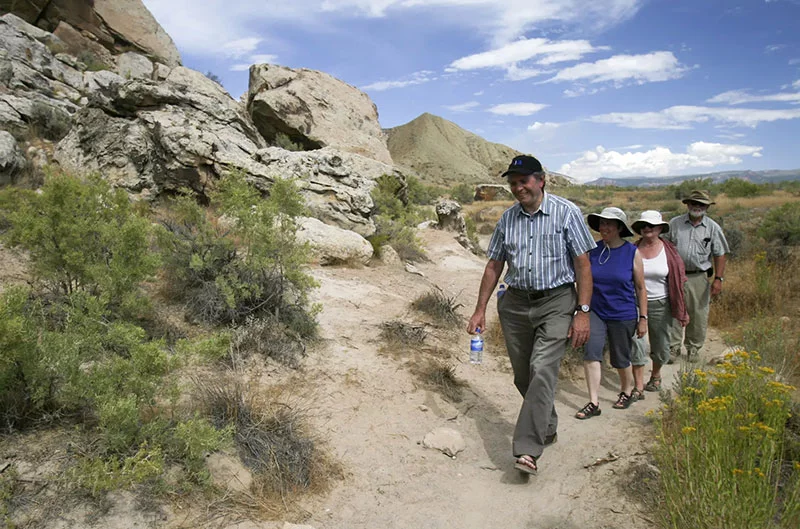
The lovely warmth of summer can turn dangerous or even deadly when someone becomes dehydrated or suffers from heat-related illnesses, such as heat exhaustion and heat stroke.
“Like a lot of things, this is very preventable,” Lam said. “Be liberal and generous with your hydration.”
It’s important to know the difference between heat exhaustion and heat stroke.
The symptoms of heat exhaustion include:
- Rapid heartbeat
- Fast, shallow breathing
- Slightly elevated body temperature
If a person with heat exhaustion has symptoms that don’t improve within an hour, they should seek medical care.
The symptoms of heat stroke include:
- High body temperature
- Lack of coordination and/or confusion.
- Hot and dry skin and profuse sweating
- Rapid heart rate and breathing.
A person suffering from severe heat stroke needs medical help immediately.
You can stay safe in the summer heat by following these recommendations:
- Make sure you hydrate frequently.
- Avoid being outside during the hottest and sunniest part of the day from 10 a.m. to 4 p.m.
- Take frequent breaks in the shade if you’re outdoors.
- Be aware that hot days can affect anyone, particularly those who are pregnant, people ages 65 and older, those who are working or exercising in the heat or people who have heart or chronic health conditions.
Learn more about symptoms of heat exhaustion and heat stroke, and how to stay cool in the heat.
And before you head out for any summertime activity, review these insider tips for a successful Colorado summer outing.
Lam wants Coloradans to know that ERs are staffed and ready for summer trauma season.
“We are here for people when things go wrong,” he said.
But he and his fellow doctors would prefer that you have fun, stay safe and skip an ER visit.
